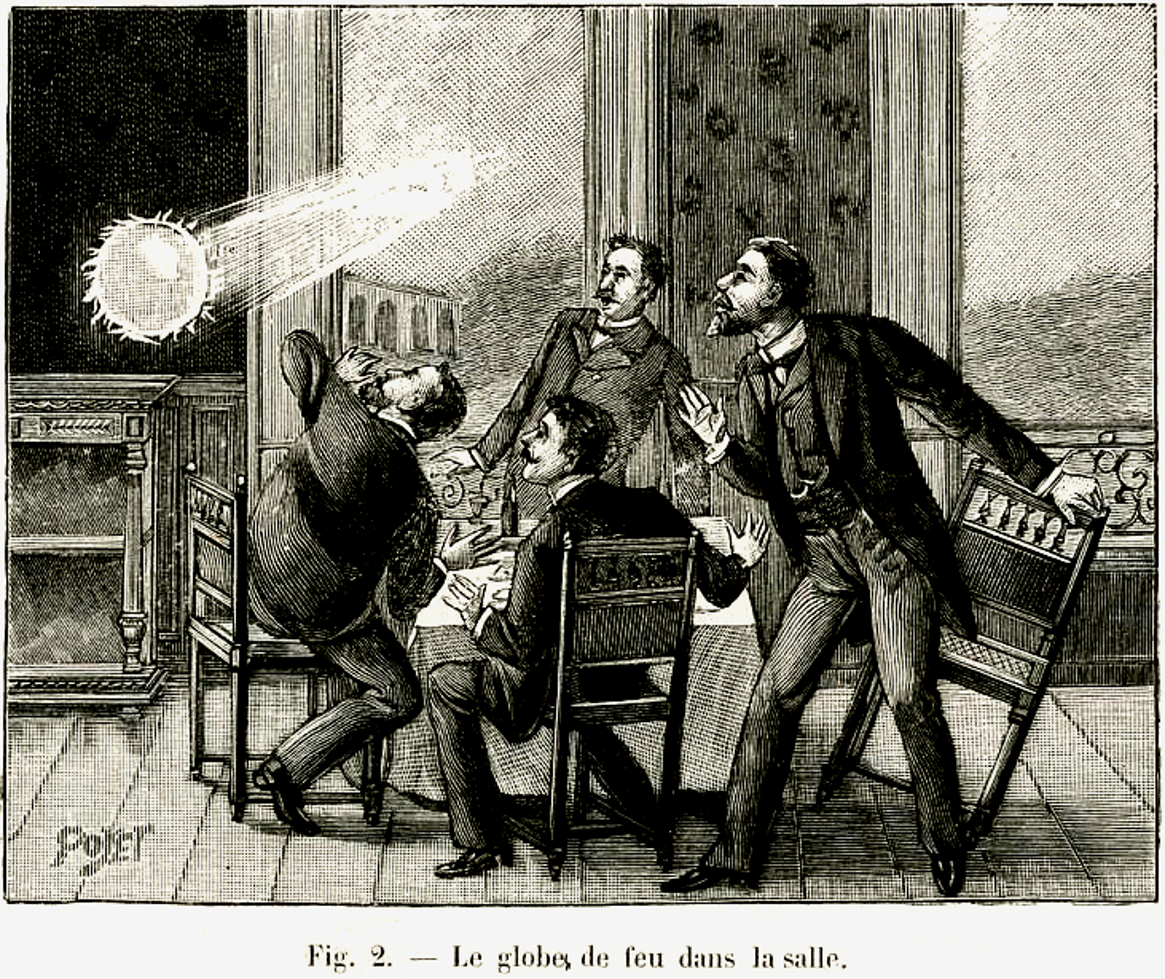Ball lighting is something I have wanted to write about now for a long time. I was first introduced to ball lightning in elementary school as just another form of lightning that moved across the ground. I never really questioned it until more recently, when I started to hear more about it. Ball lightning seems to be something that many people report seeing, but there is little in the way of physical evidence. Its a phenomena that lots of people accept without really knowing what it is, just as I did. So I decided to do some investigation on the subject.
My first questions in researching this were 'what is ball lightning?' and 'does it exist?' To my surprise, finding answers these two questions was no simple task. The is a compilation of
anecdotal stories of ball lightning on the Internet. As I read these, one thing became very clear: "ball lightning" is not one thing. The stories vary wildly for each person. Some of the stories are clearly astronomical objects like Venus and bright meteors. Other stories sound like they could have other plausible ordinary explanations as well. If we dismiss these stories, we are still left with some interesting accounts.
Of those accounts I couldn't immediately explain, there were few common threads. Some people saw a blue orb and others saw a red or orange orb. Many of the stories did take place during a lightning storm or there was some other source of electricity in the immediate area. Some people saw it hovering above the ground, others near the celling, and other reports say it was following a fence or wall. Sometimes it just disappeared peacefully and other times it crashed into objects and people, causing varying amounts of damage. Some common factors in all these stories seem to be that "ball lightning" is roughly a sphere in shape and it doesn't appear to have direct contact with object without disappearing. One thing that bothers me about these reports is that the vast majority of them are based on people's memories from usually over 10 or 20 years ago.
So what do I make of these reports? It's hard for me to say there's nothing at all going on here, but if there is, it is a very rare effect. Even if ball lightning does exist, it is very overblown. Our memories as humans degrade over time, so I am very wary of these older reports. Some reports were even second or third hand. The worst of them just assumed ball lightning as the cause of some electrical explosion. So I wasn't convinced ball lightning exists, but next I wanted to see if there was any plausible explanation to explain some of these stories.
There are some interesting explanations for how ball lightning might form. Explanations vary, but all of them tend to be really technical. Some involve complex ways of refracting light and others purpose floating balls of plasma. Another idea is that nano-particles kicked up by normal lightning strikes can hover and burn for a few seconds after a strike. None of the hypothesizes I found explain the diversity of ball lightning experiences. A new idea even suggested that ball lightning is a
hallucination caused by electromagnetic fields interacting with the brain. I think that this is one of the main reasons none of them have become well accepted by the scientific community.
So what's the final word on ball lighting? Personally, I'm not convinced that ball lightning is a actual phenomena. Before we start a serious investigation of anything, we need to make sure there's something to investigate. Some cool science has been done on the subject, but not enough to prove anything conclusively. I attribute ball lightning to mistaken sightings of astronomical objects, known but rare atmospheric phenomena, old distorted memories, and hallucinations. Culture gives all this the name ball lightning.












